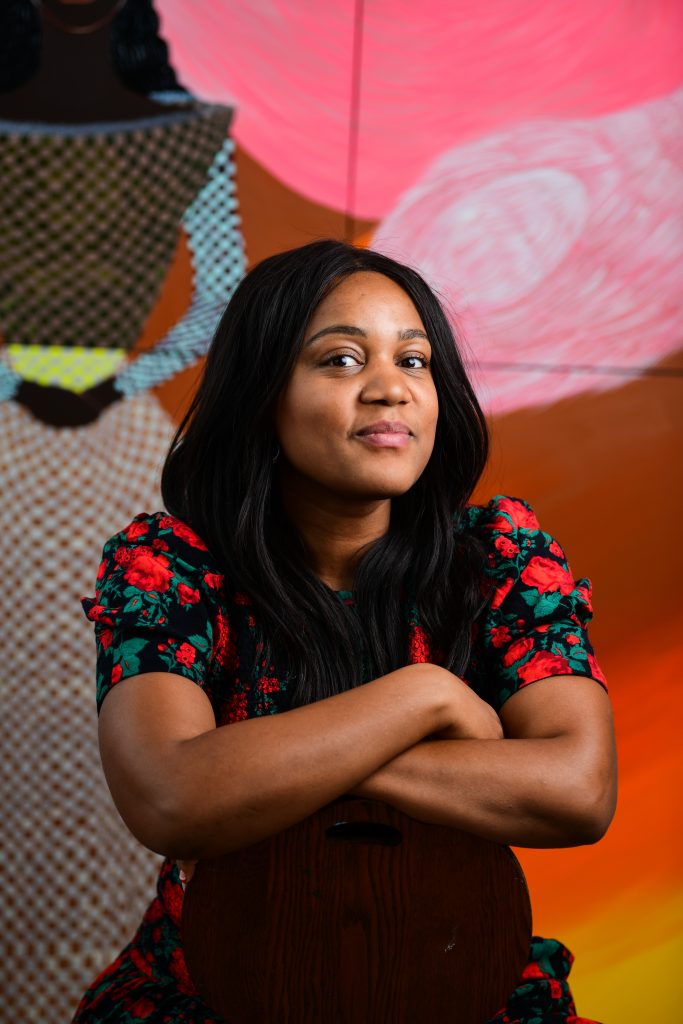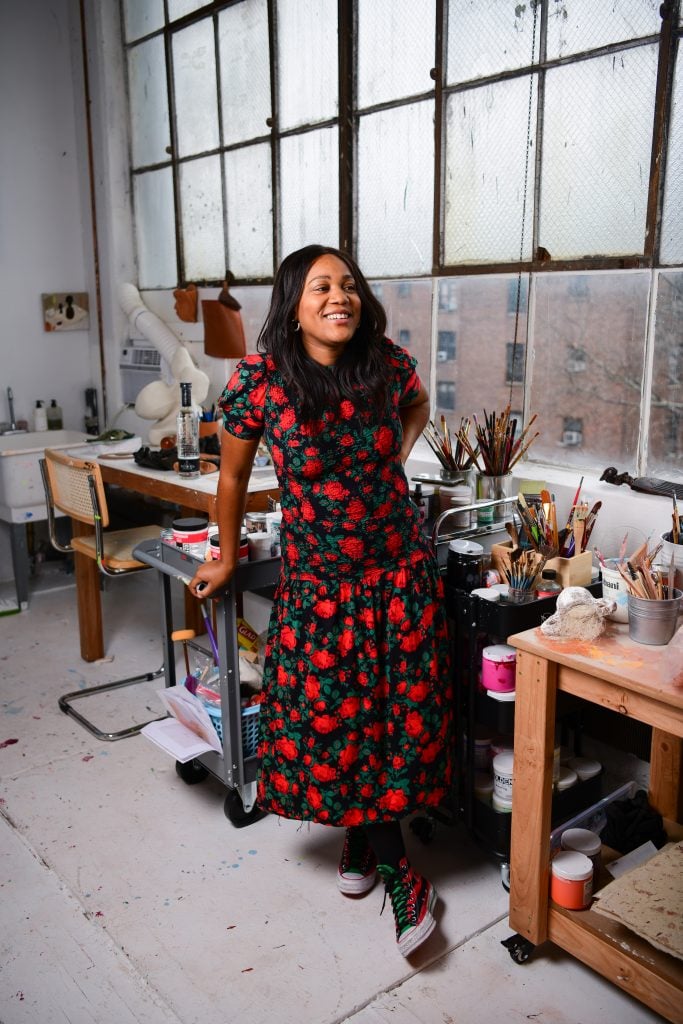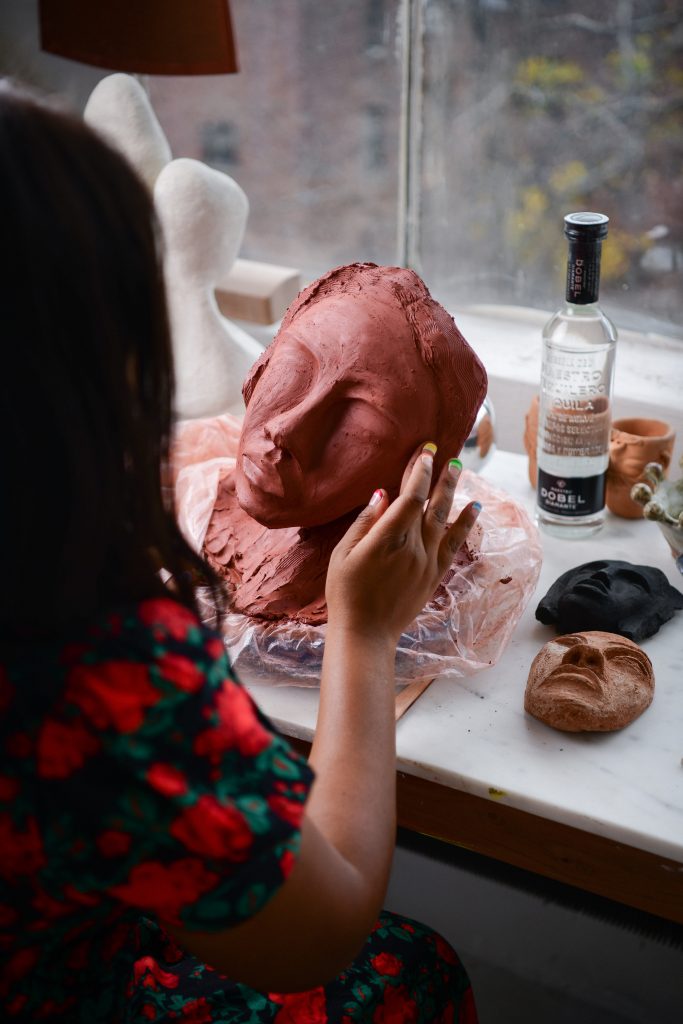To mark Maestro Dobel Tequila’s sustained support of the arts and cultures of Mexico, Artnet is teaming up with the brand to support the Pocoapoco artists’ residency in the south of the country. In celebration of the residency’s ethos of intelligent innovation and its drive to uphold and transform tradition, the spirit-maker will make a donation to assist its operations. This interview is part of a series of three with artists who have passed through the program.
The Brooklyn-based Haitian-French artist Delphine Desane, whose big art-world break came when she painted the cover of a recent issue of Vogue Italia, arrived at the Pocoapoco residency in Mexico with a goal: to better understand the country’s Afro-Mexican history, and to immerse herself in indigenous cultures.
“I learned a lot about the importance of transmission, legacy, and heritage,” Desane says. “This is really important in my practice. I am a mother, and as parents, we act as guides. But in order to be the best version of yourself, we need to know where we came from and value that. And I value that even more now.”
We spoke with the artist about how her sense of the world changed while she was in Mexico, the value of communal living for artists, and the spiritual energy that courses through Pocoapoco.

Artist Delphine Desane in her studio. Photo: Max Flatow Photography.
What led you to the residency at Pocoapoco? What interested you about Mexico?
I first visited Mexico in 2015, to visit a friend who recently moved there from France. I had to stop in Oaxaca before reaching Mazunte, a magical beach village where she lives. That’s when I fell in love with [Oaxaca]. The first thing that struck me was the pastel colors, which were reminiscent of the ones you can find in Haiti, where my family is from. Both were influenced by the Spanish colonization.
The second thing was the omnipresence of craftsmanship. The creative energy is intense and everywhere. I really admire how Mexico managed to preserve its indigenous communities and their traditions despite colonization—something that couldn’t be done in Hispaniola (the Dominican Republic and Haiti) with the Taíno [people].
I then learned about all the different racial groups that originally inhabited the country throughout my study of Casta painting. I decided to find a program in Mexico where I could focus on my research, and I found Pocoapoco.
One of the paintings I made during my residency is an homage to the Afro-Mexican community, which was counted on the Mexican census for the first time this year, after so many years of not being seen.
Was there a particular aspect of your craft that you wanted to refine while at the residency?
I really wanted to learn more about pottery, and Oaxaca is the best place for that. The residency is located in the center of the town, which makes it really easy to go visit all the different potters’ villages and learn about their craftsmanship. Each village has its own tradition and history. There is a story behind each form, whether it’s a century-old tradition or a shape specifically created by an artist that would most likely have disappeared if it wasn’t passed on to someone else. It’s beautiful and fascinating.
And of course, from a painter’s point of view, the color of the city is also very stimulating, and Pocoapoco provides a really nice and quiet place to paint.

Artist Delphine Desane in her studio. Photo: Max Flatow Photography.
Were there any aspects of the residency that were especially surprising to you?
There is strong spiritual feminine energy that emanates from this place. It’s pretty rare and hard to formally describe. I enjoyed the immediate sense of community, the communal meals, the weekly meetings, and to be able to meet Mexican artists that were invited to the residency.
In what ways did your work change as a result of the residency experience?
I was able to make a few clay sculptures while I attended the residency, which I used as studies in my studio here in New York to create larger work. The clay I used for my studies came from potter villages that we visited while I was there. We also visited El Taller Arte Papel of Oaxaca, a paper-making cooperative founded in 1998 by Francisco Toledo, where I bought some paper made of natural fiber, like pochote, coyuchi, hemp, silk, linen and flowers. I usually don’t paint on raw surfaces, but I have started to experiment with them and hope that it will take me somewhere else.

Artist Delphine Desane at work in her studio with Maestro Dobel Diamante, the world’s first-ever Cristalino tequila. Photo: Max Flatow Photography.
Were there any artists you were exposed to during your stay that were especially interesting to you?
I discovered the work of the painter Rodolfo Morales, who is well known for his magical realism, which somehow reminds me of the Haitian painter Hector Hyppolite. I also got to see a lot of Francisco Toledo’s works, which was a first for me. He had an exhibition in Oaxaca while I was at the residency in February.
How would you describe the legacy of the Pocoapoco residency?
It already has a strong legacy. It’s a women-identifying-led residency that has hosted great artists. It might be overlooked by some, but soon they will understand why it has, and will continue, to guide amazing artists.
What advice would you give to future artist residents coming to Pocoapoco?
Go for it!
Follow artnet News on Facebook:
Want to stay ahead of the art world? Subscribe to our newsletter to get the breaking news, eye-opening interviews, and incisive critical takes that drive the conversation forward.
"artist" - Google News
December 17, 2020 at 03:00AM
https://ift.tt/3gWjYbT
‘Each Village Has Its Own Tradition’: Artist Delphine Desane on the Cultures of Mexico and the Pocoapoco Residency - artnet News
"artist" - Google News
https://ift.tt/2FwLdIu
Bagikan Berita Ini















agen dengan 100% player vs player hanya di IONQQ :)
ReplyDeleteWA : +855 1537 3217